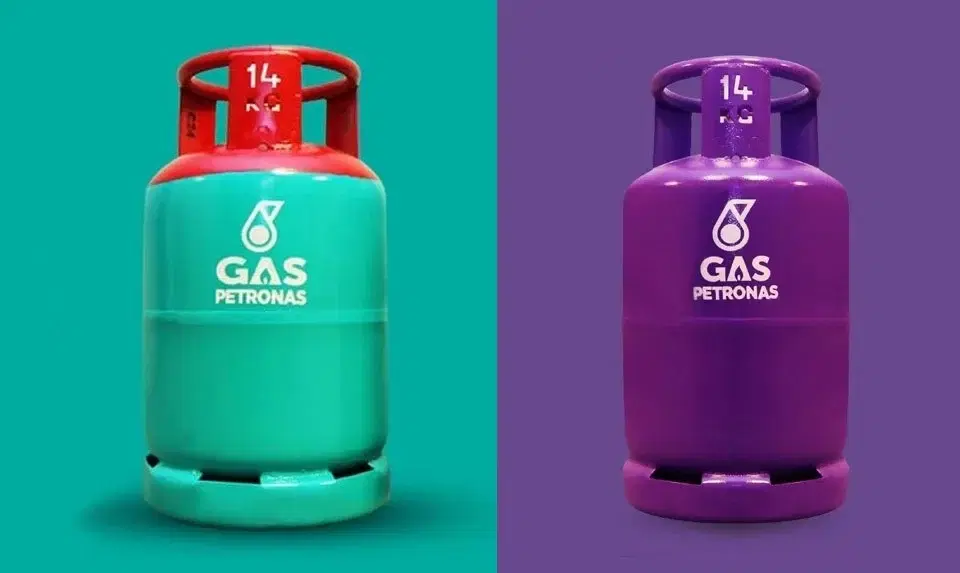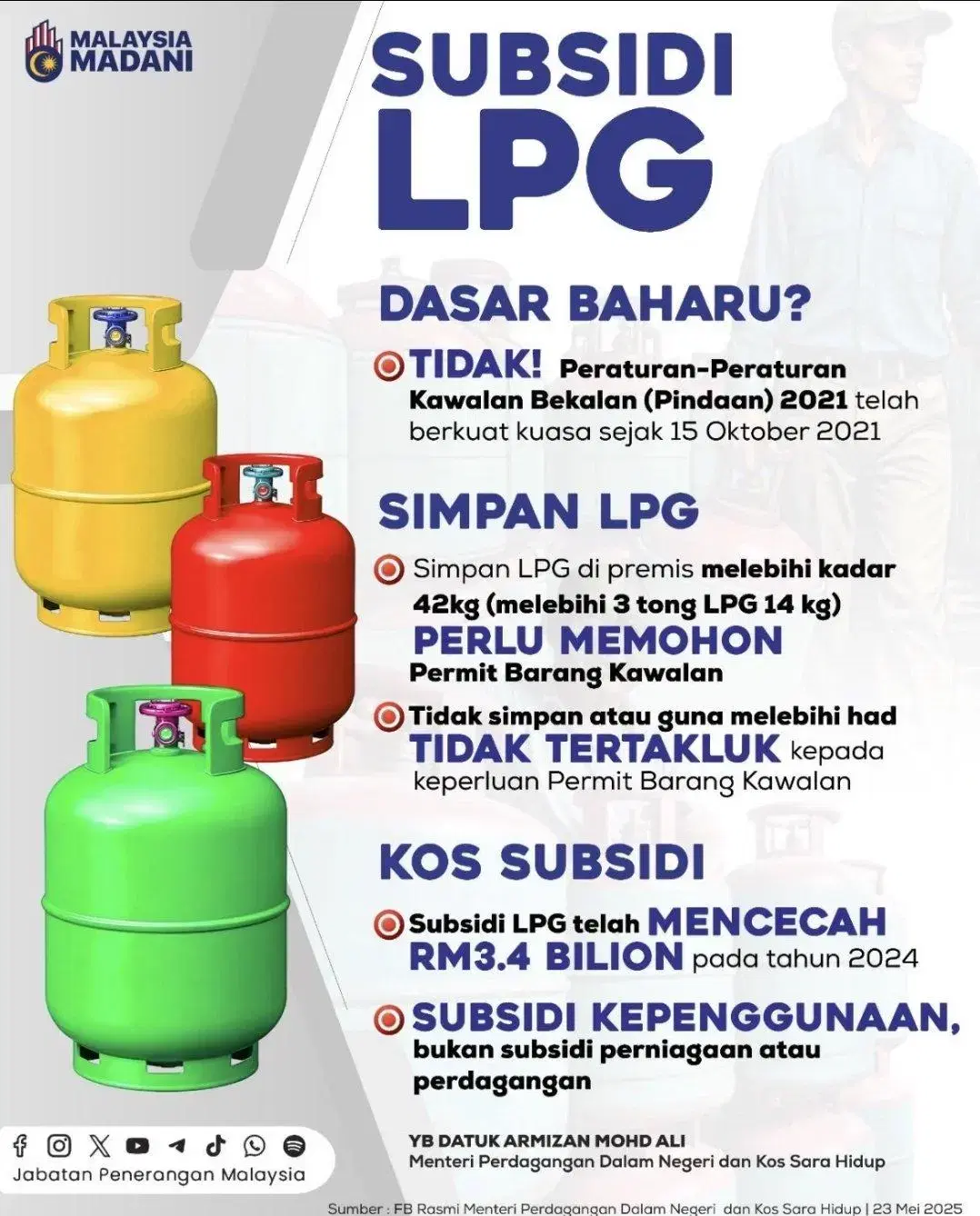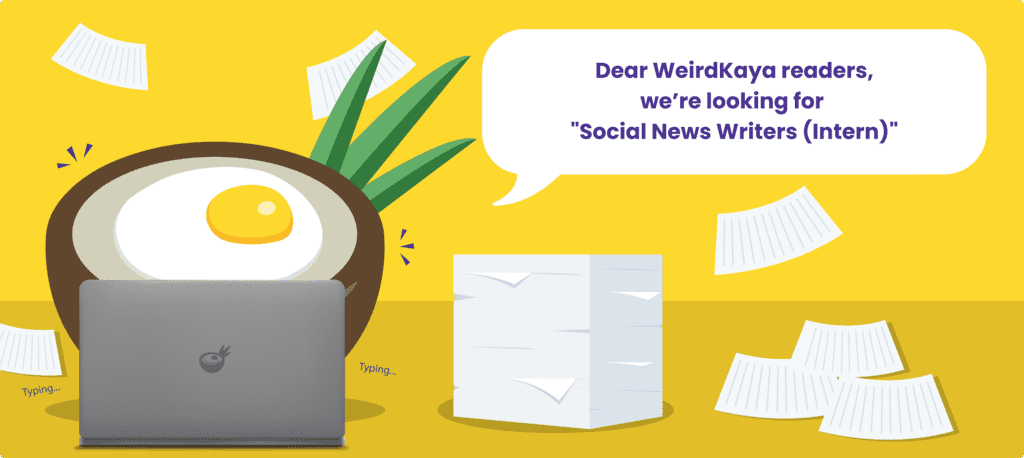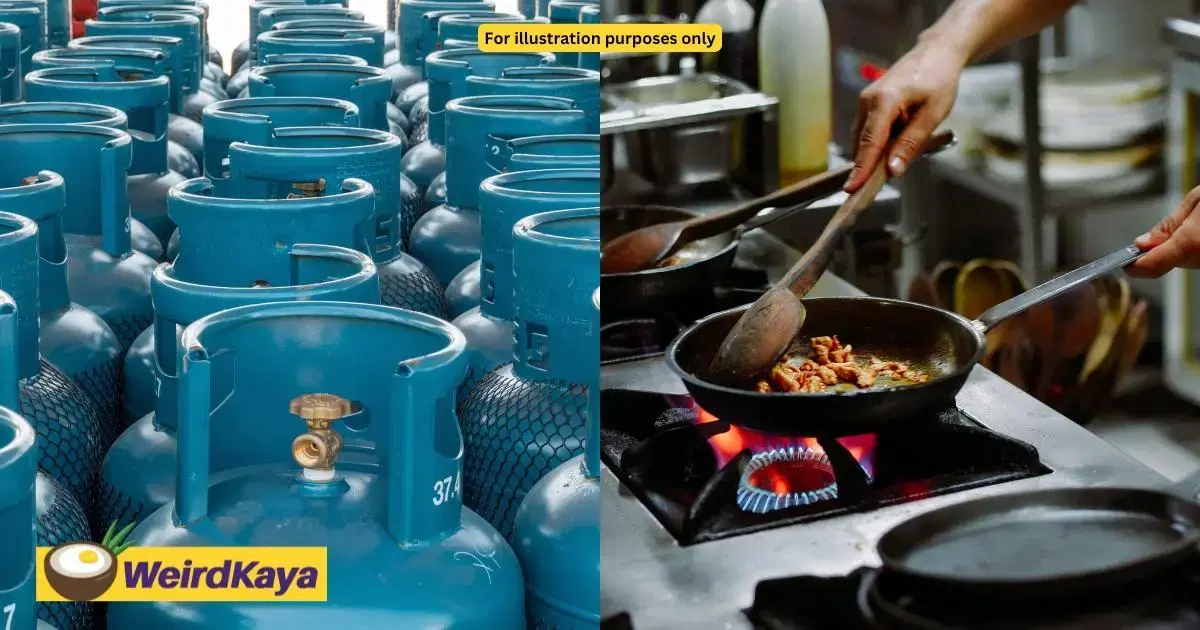You know the green or orange gas cylinders we all use at home for cooking?
That’s subsidised LPG (liquefied petroleum gas), and it’s meant to make life a bit easier for regular people like us.
But recently, there has been a lot of confusion over who’s actually allowed to use it, especially with small business owners and hawkers now being told to switch to more expensive commercial LPG.
So here’s the lowdown.
First of all, what’s LPG subsidy?

Let’s start with the basics.
The government subsidises 10kg, 12kg, and 14kg gas cylinders to keep prices affordable for home use.
Without this subsidy, prices would follow the global oil market, and that means they’d likely be way more expensive.
In short, this subsidy makes sure cooking gas stays affordable for households across Malaysia.
Who can use it?
Now that you know what the subsidy is, the next question is: who gets to enjoy it?
According to the Ministry of Domestic Trade and Cost of Living (KPDN), only households are eligible.
So if you’re cooking meals for your family, you’re in the clear.
But when it comes to business use, like restaurants, hotels, or laundromats, things change.
These businesses are expected to use non-subsidised commercial LPG, which comes in purple cylinders and costs a lot more.
What if I’m just a small stall selling nasi lemak?
Good question.
If you’re a small trader or hawker who only uses one or two cylinders, you’re still okay for now. There’s some flexibility given to micro businesses.
But here’s the catch. Once you go past three cylinders, which is 42kg of gas, you’ll need to apply for a permit.
No permit means it could be seen as subsidy misuse, and it might land you in trouble.

Why so strict all of a sudden?
You might be wondering why the sudden clampdown.
The truth is, some businesses have been abusing the system.
There have been cases where people bought subsidised LPG illegally or transferred gas into other containers to make a profit.
Not only is this illegal, it is also extremely dangerous, especially in places like food stalls and small kitchens.
Plus, it wastes public funds that are meant to help those who actually need it.
What laws are we talking about?
To back all this up, the government has a few key laws in place.
- Supply Control Act 1961
- Supply Control Regulations (Amendment) 2021
- Price Control and Anti-Profiteering Act 2011
What do these say?
If you’re using more than 42kg of LPG, you must have a permit. Also, it is strictly prohibited to resell or transfer subsidised gas to someone else.
OPS GASAK
To stop the abuse, the government launched OPS GASAK, an enforcement campaign aimed at catching those misusing subsidised gas.
So far, many businesses have been raided. Some had their gas cylinders seized and were hit with fines or legal action. It is clear that KPDN is taking this seriously.
So, what should you do?

At this point, you might be wondering what you’re supposed to do.
If you’re a regular household user:
You’re fine. Keep using your green or orange gas cylinders as usual.
If you’re a small trader:
- Stay within the three-cylinder limit
- Don’t buy gas from unverified sources
- Use official gas distributors
- Apply for a permit if you need more
To summarise:
- Subsidised LPG is for personal use only
- Businesses must use commercial LPG
- Small traders can still use subsidised gas, but within limits
- If you go past three cylinders, get a permit
- OPS GASAK is actively monitoring and taking action
At the end of the day, this subsidy exists to help those who need it most. As long as everyone plays by the rules, it will continue to benefit households across the country and keep our home-cooked meals affordable.



